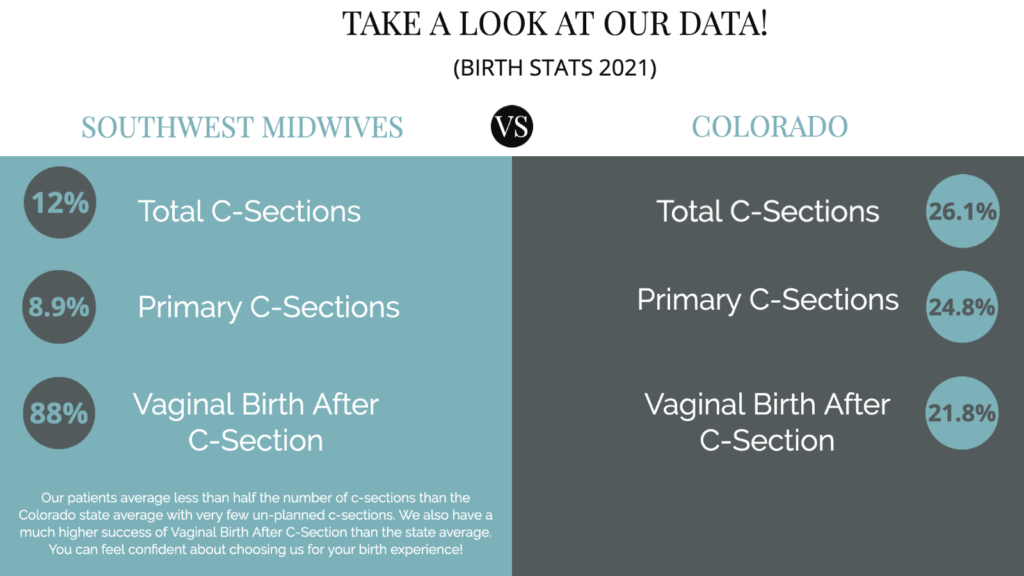VBAC at Southwest Midwives
What is a VBAC?
At Southwest Midwives, we support women who are interested in pursuing a Vaginal Birth After Cesarean (VBAC). With a high success rate for VBAC at Southwest Midwives, we have the experience to help you make an informed decision with safe options. In 2019, our VBAC rate was 87.5% which is well above the global success rate of ~70%.
Why choose a VBAC?
Cesarean births have become more common over time in the United States with a rate of 4.5% in 1965 to 31.7% today. At Southwest Midwives, our c-section rate is roughly 10.5% which is within the recommended rate of 10-15% set by The World Health Organization. We work with our clients to help prevent first-time c-sections and to determine if VBAC is right for you.
Is VBAC safe?
We do everything possible to ensure your safety during a VBAC by closely monitoring you and your baby during labor. We also have quick access to advanced medical care if unexpected complications arise.
Risks & benefits of VBAC
In the table below you will find risks associated with repeat cesareans and the benefits of VBAC. During your prenatal visits, we will discuss the individual risks and benefits of VBAC with you.
| VBAC | Repeat Cesarean |
| -0.5-1% Risk of Uterine Rupture Shorter recovery -Non-surgical -Potential for vaginal tearing -Less risk of hemorrhage (excessive blood loss) -Less risk of infection | -Increased maternal morbidity (blood transfusion, admission to ICU) -Increased maternal mortality rate -Injury to the bladder or other surrounding organs |
Can anyone have a VBAC?
We believe that every eligible woman with a history of a prior cesarean should be given an opportunity for a Trial of Labor After Cesarean (TOLAC). There are certain factors that improve your chances and we will discuss them with you individually during your pre-natal visits. For example, if you have or have had any of the following conditions, then VBAC may not be the right option for you.
- Previous classical or inverted T uterine scar
- Previous hysterectomy or myomectomy entering the uterine cavity
- Prior uterine rupture
- More than one previous cesarean delivery
Feel free to contact us if you are interested in pursuing a vaginal delivery after cesarean and we will review your prior records and discuss your options in-person.

